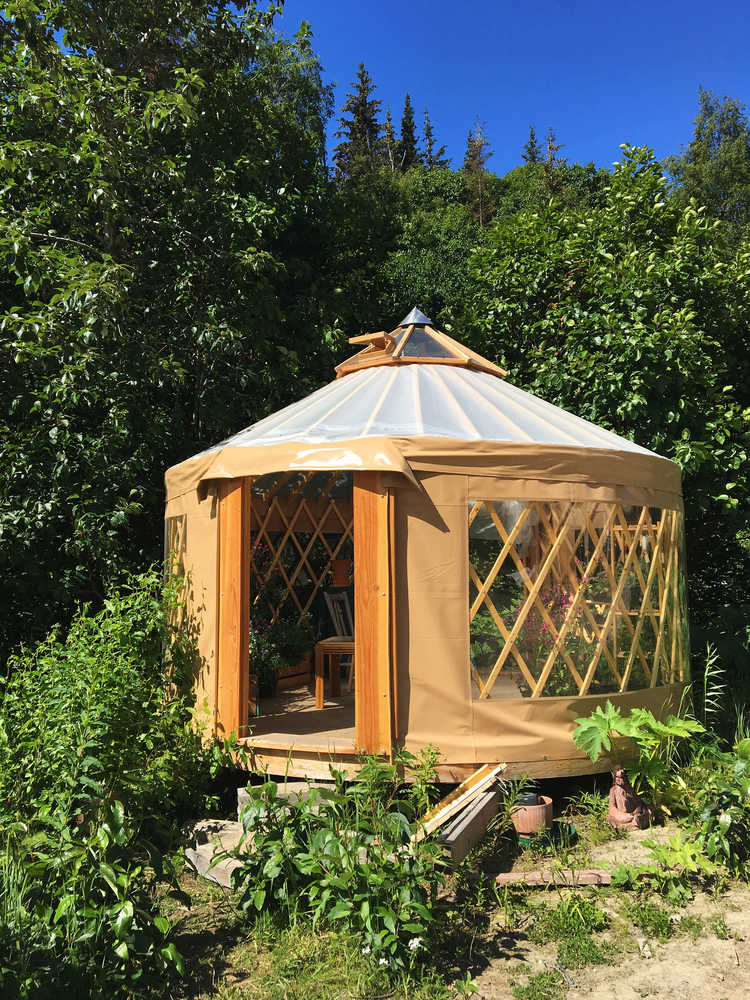A Homer business, Nomad Shelter, which crafts custom yurts, has been approved as a manufacturer for the federal government’s high tunnel program.
Nomad will be partnering with the High Tunnel System Initiative, a federal program, which has consistently expanded since its creation, especially in Alaska. Molly Voeller, of the U.S. Department of Agriculture’s Natural Resources Conservation Service state Office in Palmer, said that Alaska has more high tunnels than any other state, at almost 680 installed, and that the Kenai Peninsula Borough has more than any other borough or county in America, with 325 installed. With the approval of Nomad, also currently the only approved high tunnel manufacturer on the peninsula, the program is likely to continue growing, especially in the Homer area.
The program requires participants to enter into a five-year contract, during which time the high tunnel is subject to inspection. Voeller, who has received many questions on the subject, also wished to clarify that a high tunnel as part of this program may not be used for personal or commercial marijuana use, and cannot even be built on a property where it is grown in any amount.
In terms of easing restrictions within the program, and opening the door to crafters like Nomad Shelter, high tunnels may now be built without any size restrictions, or a restriction upon how many a person can operate. The only stipulation is that the payment cap may not exceed $16,700 for the sum total of every high tunnel a person operates.
Instead of the program’s typical high tunnel design, Nomad has been approved to manufacture a variation of their greenhouse yurt as a substitute. The only major change to the design of the greenhouse yurt is that it will be placed on the ground, rather than elevated with a floor. Ava Hull, Nomad Shelter employee, cites a number of benefits to a yurt rather than traditional high tunnel, the first of which is that a yurt has a smaller footprint, making it easier for those with smaller amounts of land to become part of the program. She also says that a yurt is, “a nice compliment to a custom home,” more so than the half cylinder design.
Also unlike traditional high tunnels, which often must have the cover removed before each winter, these locally made yurts are crafted to withstand Alaska winters and the snow load that sometimes goes along with them. Co-owner Lee Tenhoff, said that he is also working on a lighter model of the greenhouse yurt which would have a slightly lower snow load, but would be easier to transport, and cheaper.
For those interested in getting involved with this program and also supporting a local business, you may contact the NRCS of Homer, or go online to Alaska’s NRCS page for more information.
Mattea Peters is a Homer News intern.



